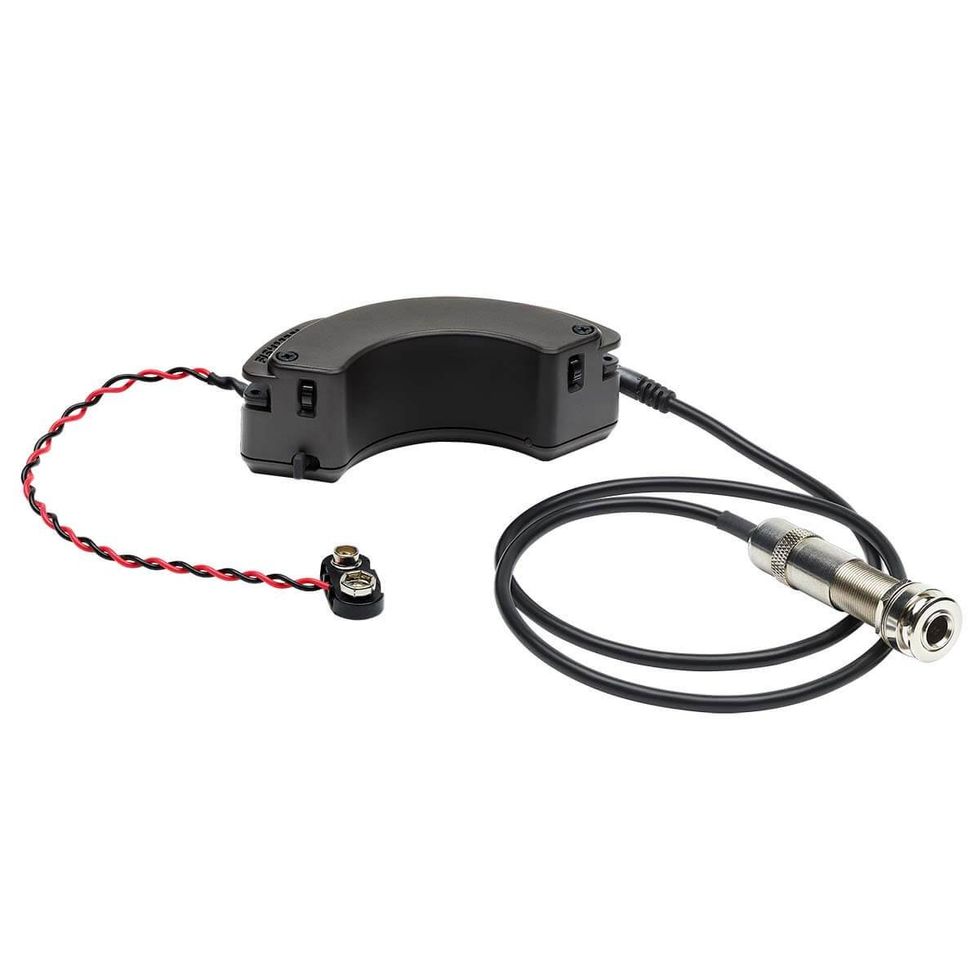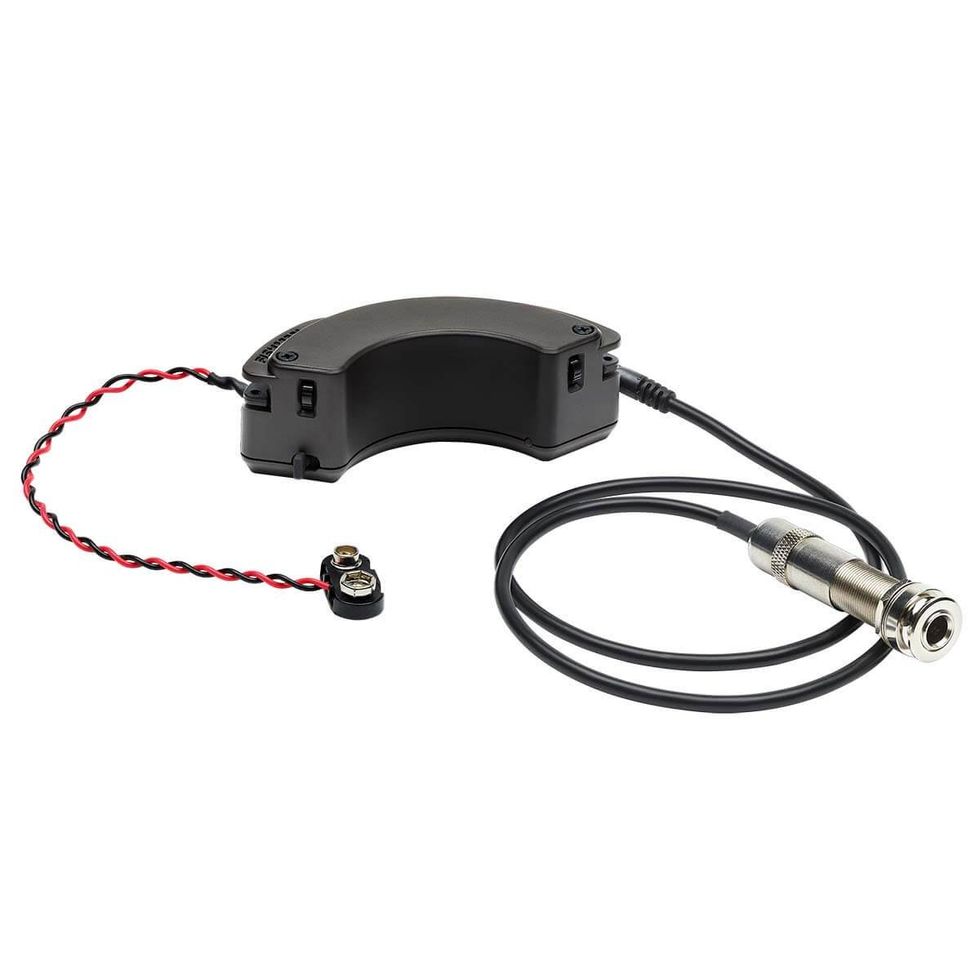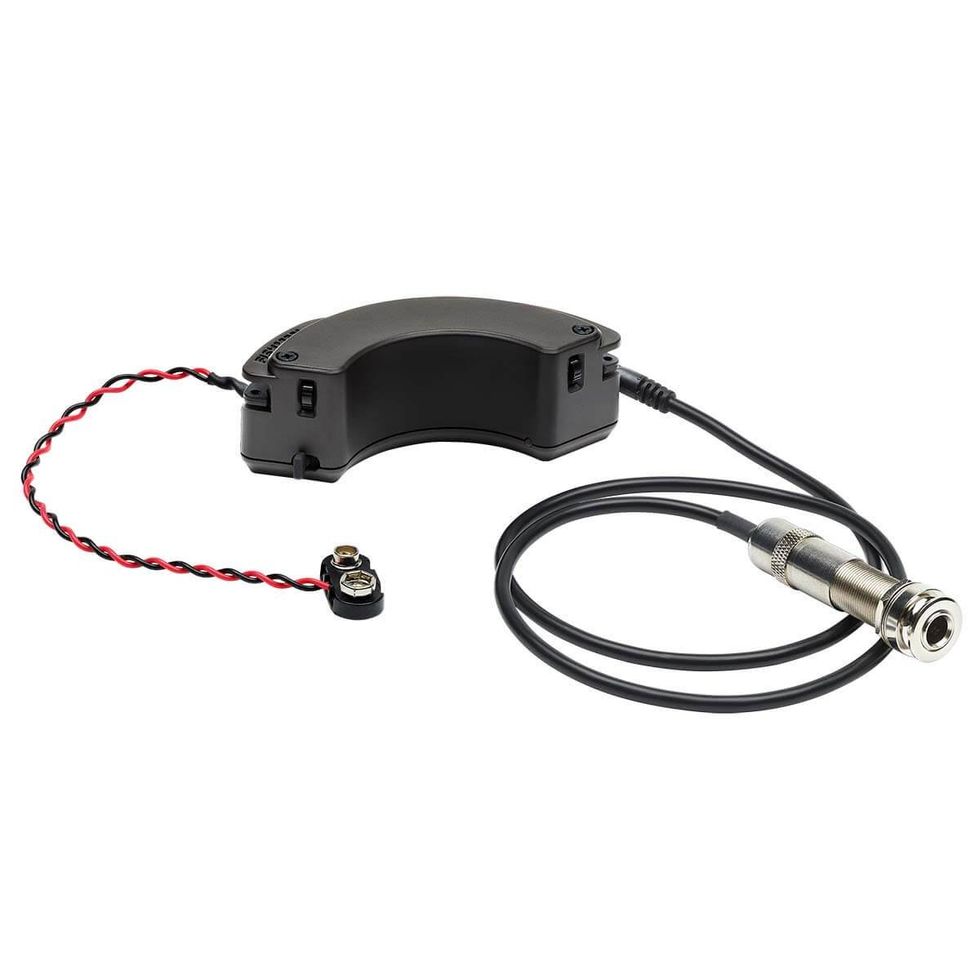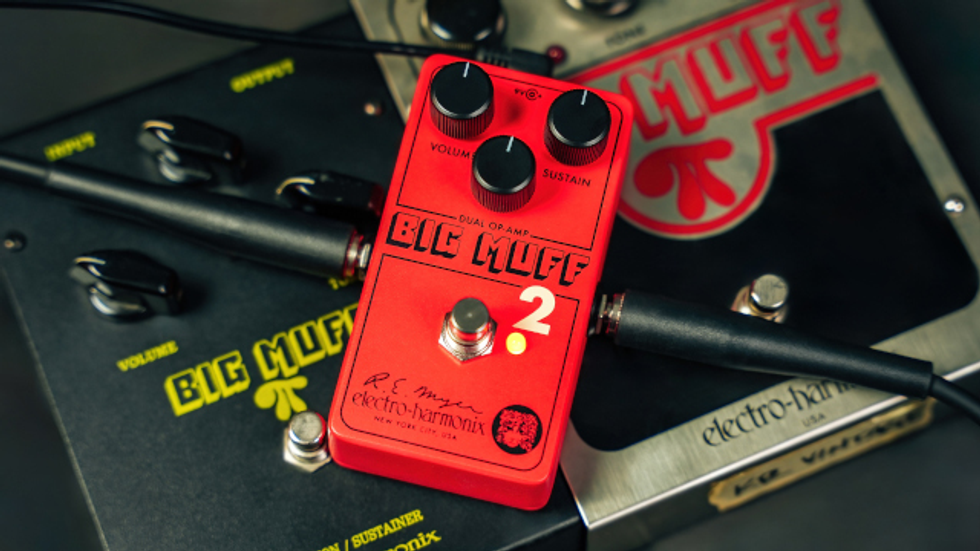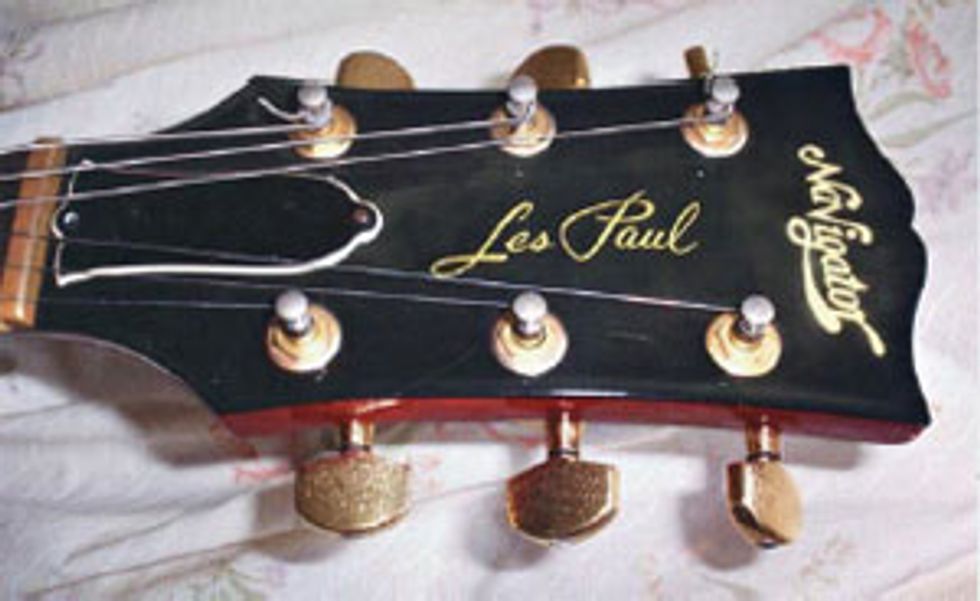 I hope you can help me with this guitar I bought. I am more
interested in the history of the guitar than the value, but I
wouldn’t mind knowing how rare a guitar like this is. Here
is what I know: this is a Japanese Les Paul-style guitar that
has had some of the hardware replaced including the brass
nut, gold Schaller tuners, and brass bridge and tailpiece.
Also, I’m not sure what to make of all the brass hardware,
but I think I want to replace it.
I hope you can help me with this guitar I bought. I am more
interested in the history of the guitar than the value, but I
wouldn’t mind knowing how rare a guitar like this is. Here
is what I know: this is a Japanese Les Paul-style guitar that
has had some of the hardware replaced including the brass
nut, gold Schaller tuners, and brass bridge and tailpiece.
Also, I’m not sure what to make of all the brass hardware,
but I think I want to replace it.
Michael in Hilo, HI
Hi Michael,
It seems like every new day turns up a new copy of a Les Paul, and the Navigator brand is no different. How in the world did they get away with using “Les Paul” on the headstock? In today’s world, the lawyers would have been hounding the guitar copier before the nitrocellulose was dry on the headstock.
Navigator is a trademark that ESP (Electric Sound Products) owns and uses on a line of guitars. ESP started out as a parts company that sold guitar component and replacement parts. Although the ESP Guitar Company wasn’t formed to produce guitars until 1985, several guitars were built from parts that bear the ESP trademark. Navigator guitars first appeared in the early 1980s, and the earliest catalog I could find that included them was from 1981. It appears that ESP used Navigator for actual production instruments before ESP guitars were put into standard production. Currently, ESP still offers guitars under the Navigator trademark, but unlike ESP, LTD, or XTone, they are not offered in the U.S.
From the pictures, it is obvious that this is a rip-off of a 1958-1960 Gibson Les Paul Standard “Burst.” Unlike the Standard’s two-piece flamed maple top, the Navigator has a two-piece mahogany top that is much less figured. Part of what makes the original Les Paul Standard so valued is the highly flamed maple top. Other than the gold hardware that adorns the guitar, this instrument is very similar to an original Standard – especially the “Les Paul” logo on the headstock. These guitars were numbered LP-100, LP-150, LP-200, LP-250, LP-300, etc. and were named for how much they cost in Japanese Yen (LP-100 cost 100,000 yen originally, LP-250 cost 250,000 yen originally). From what I’ve read, many players are impressed by the quality of these guitars and how well they play.
You are right to be suspicious about the brass hardware. Although, I have no information about what the original hardware was, these pieces should probably be changed. Brass hardware was used in the 1970s and 1980s, when many manufacturers thought it sent sustain through the roof. However, it usually just added to the weight of the guitar and gave the poor guitarists that had to sling this beast more back problems.
The good news is that technology has come a long way since then, and there are several options on the market that will increase sustain and actually lessen the weight of the guitar. In fact, in the July 2007 issue of Premier Guitar, my fellow co-writer, Dean Farley, touched on this subject, recommending Graph Tech’s ivory saddles and nuts, but there are several options available as well. Find out what kind of sound you are looking for and go from there.
Every catalog and/or price list I’ve seen list prices in Yen, so I doubt that these guitars were ever distributed into the U.S. market. With Hawaii’s proximity to Japan, the Navigator probably made its way to the island straight from Japan. However, there seems to be a niche market for these guitars as some have actually sold for more than $2,000! I have a tough time valuing any copy guitar from this era (including Ibanez) for more than $1,000, but the value is always based on what the market will bear (several Tokai Les Paul copies have sold on eBay for around $2,000). Until the “copy era” is completely revealed, it’s tough to say where any of these guitars will go in value. However, as the original models from the 1970s keep getting more expensive, it is only a matter of time until these climb in value as well. If you are simply looking for a nice playing guitar, the Navigator seems to be a treasure!
Zachary R. Fjestad
Zachary R. Fjestad is the author of the Blue Book of Acoustic Guitars, Blue Book of Electric Guitars, and the Blue Book of Guitar Amplifiers.
Guitar Trash or Treasure Questions can be submitted to:
Blue Book Publications
Attn: Guitar Trash or Treasure
8009 34th Ave. S. Ste #175
Minneapolis, MN 55425
800-877-4867
www.bluebookinc.com
guitars@bluebookinc.com
Please include pictures of your guitars.









 Bettencourt onstage with the Dark Horse at the Motocultor Festival in Carhaix, France, on August 23, 2005 Sarah "Sartemys" Leclerc
Bettencourt onstage with the Dark Horse at the Motocultor Festival in Carhaix, France, on August 23, 2005 Sarah "Sartemys" Leclerc![Rig Rundown: Russian Circles’ Mike Sullivan [2025]](https://www.premierguitar.com/media-library/youtube.jpg?id=62303631&width=1245&height=700&quality=70&coordinates=0%2C0%2C0%2C0)






